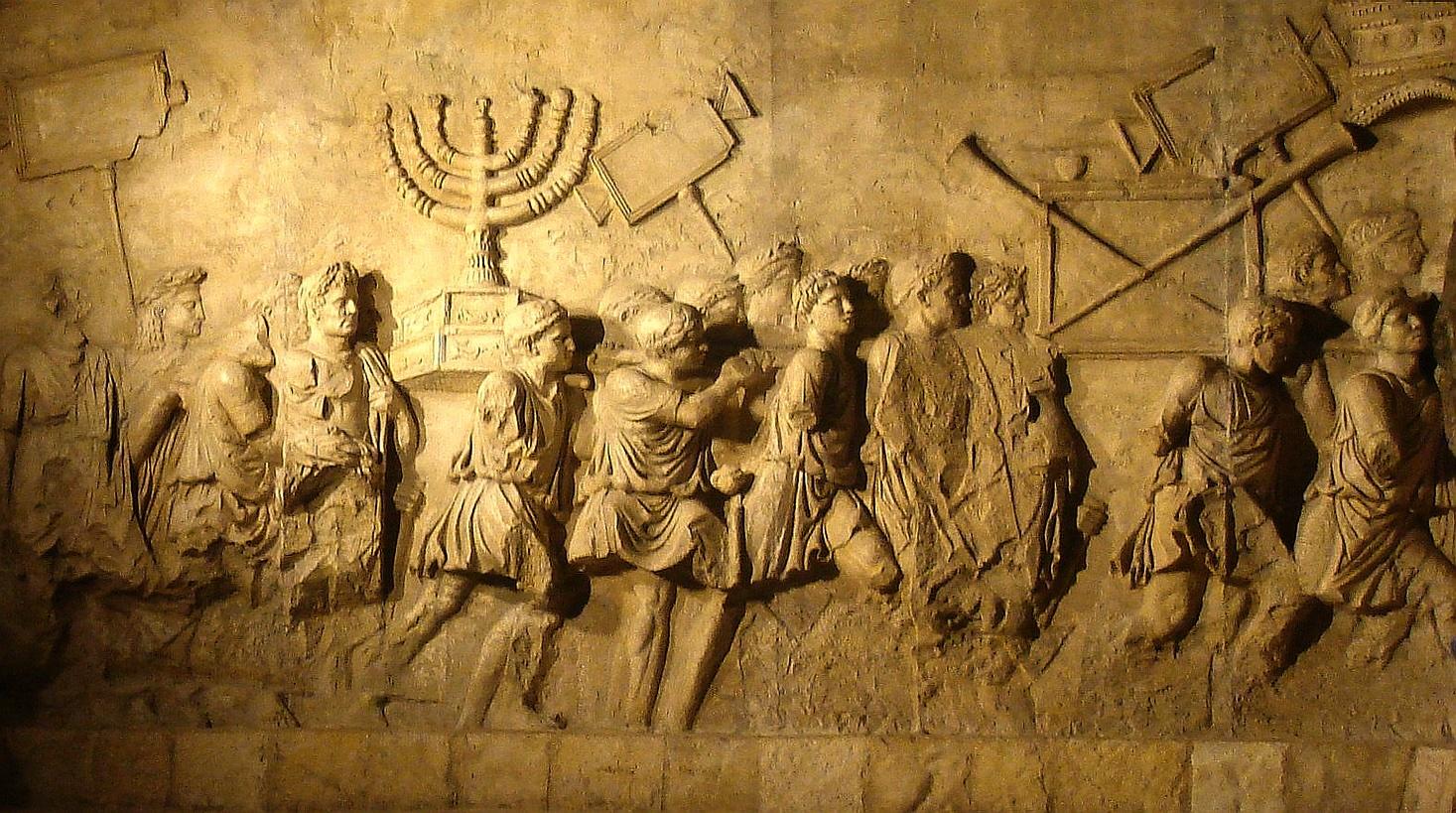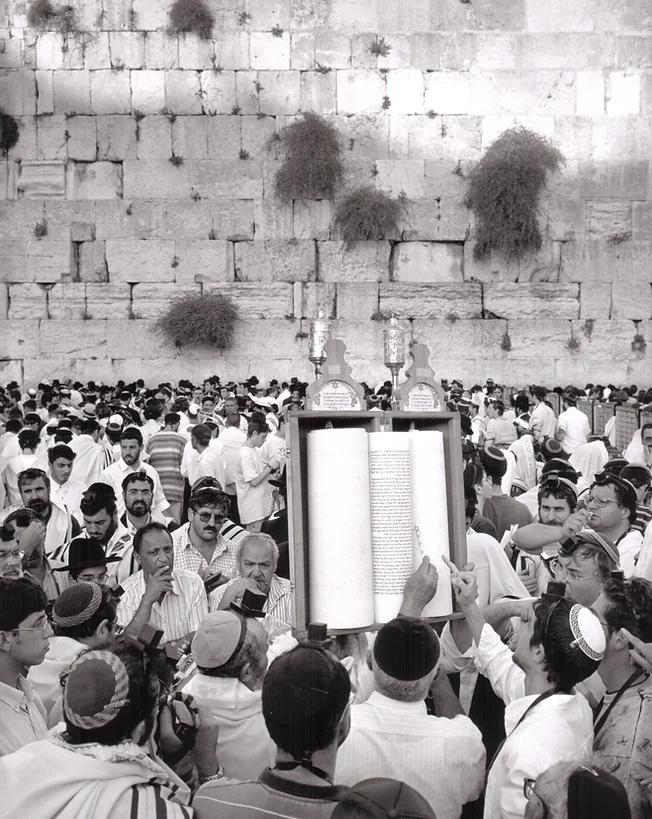The content and images in this curriculum and presentation are copyrighted and trademarked. Photographs’ subject matter is divided into categories. All photographs are by Zion Ozeri. You may only use the presentation or parts of it while implementing the DiverCity Lens in your school. For any other use, including reproduction, you must get special permission from Zion Ozeri. The use of the following content, which may be objectionable, is at your own risk, and Zion Ozeri holds no responsibility to evaluate the accuracy, completeness, and usefulness of any content provided, prior to your use. You may contact Zion Ozeri for any questions: zion@zionozeri.com
Roman Dispersion
Lesson Plan by Zion Ozeri and Josh Feinberg

The Arch of Titus, Rome, Italy, Circa 81CE
Look closely at this image:
- First look at the way these people are dressed and what theyre wearing on their heads. What do you notice? Where and when do you think these people might be from?
- This is an image from ancient Rome. How do you think this image was created? What materials do you think were used?
- Do you recognize any of the objects being carried by this procession?
- Along with plaques and trumpets, these men are carrying a seven-branched Menorah, which had an important place in the ancient Temple of Jerusalem. This image was carved on a grand archway, known as the Arch of Titus, in Rome in 81 CE, about 11 years after the Romans conquered Jerusalem and destroyed the Temple.
- Why do you think the Romans would have carved an image showing objects carried off from the Temple? How do you think the Romans felt about this event?
- What might people do today to publicize such events?
- How do you think the Jewish people might have felt about this image? How do you feel about it seeing it today?
Read more about the Arch of Titus here:
Where Did the Temple Menorah Go? - Biblical Archaeology Society
Smarthistory - The Arch of Titus

The Wall, Jerusalem, Israel, 1992 © Zion Ozeri
Now examine this photograph:
- What do you see here?
- Do you recognize this place? What do you know about it? How does this picture connect with the previous image (the Arch of Titus)? Roughly how long after the first image was created was this picture taken?
- Why do you think these people are here? Why do they still care about this place? How do you feel about this place?
- How do you think Judaism has changed in the time between the first and second images? What has stayed the same?
Learn more here:
What Is the Western Wall? | My Jewish Learning
The Western Wall Heritage Foundation
The following story is from the Talmud, a collection of rabbinic discussions from the early centuries of the Common Era.
When the Talmud tells the story of the destruction of the Second Temple in Jerusalem, one of the heroes of the story is a teacher named Rabbi Yochanan ben Zakkai. At the time of the Roman conquest, a group of Jews known as the Zealots wanted to fight the Romans to the death. When Rabbi Yochanan ben Zakkai saw that Jerusalem could not be saved, he found a way to escape from the city. Hethen asked the future emperor of Rome, Vespasian, to grant him a new center for Judaism to survive and evolve. This piece from the Talmud tells the story of how Yavne, a city dedicated to Torah study, became the focus of Jewish life when the Temple, which had been the focal point for Jewish worship, no longer existed.
Gittin 56a-b
The Gemara relates: Abba Sikkara was the leader of the zealots of Jerusalem and the son of the sister of Rabban Yoanan ben Zakkai. Rabban Yoanan ben Zakkai sent a message to him: Come to me in secret. He came, and Rabban Yoanan ben Zakkai said to him: Until when will you do this [keep fighting] and kill everyone through starvation? Abba Sikkara said to him: What can I do, for if I say something to them they [the other Zealots] will kill me. Rabban Yoanan ben Zakkai said to him: Show me a method so that I will be able to leave the city, and it is possible that through this there will be some small salvation.
Abba Sikkara said to him: This is what you should do: Pretend to be sick, and have everyone come and ask about your welfare, so that word will spread about your ailing condition. Afterward bring something smelly and place it near you, so that people will say that you have died and are decomposing. And then, have your students enter to bring you to burial, and let no one else come in so that the zealots not notice that you are still light. As the zealots know that a living person is lighter than a dead person.
Rabban Yoanan ben Zakkai did this.
[Having escaped, Rabbi Yochanan went to the Roman camp and approached Vespasian, the general of the army, who was about to be named the leader of the Roman empire]
Vespasian then said to Rabban Yoanan ben Zakkai: I will be going to Rome to accept my new position, and I will send someone else in my place to continue besieging the city of Jerusalem and waging war against it. But before I leave, ask something of me that I can give you. Rabban Yoanan ben Zakkai said to him: Give me Yavne and its Sages and do not destroy it.
Discuss:
- Why do you think Rabbi Yochanan ben Zakkai undertook this dangerous plan? What do you think could have happened to him if he was caught?
- What would you have done if you were in his position?
- Why do you think the compilers of the Talmud wanted to tell this story?
- What impact do you think Rabbi Yochanans actions had on Judaism moving forward?
Learn more about the creation of the Mishnah in the land of Israel here:
Rabbi Yochanan Ben Zakkais Choice - National Library of Israel
What Is the Mishnah? | My Jewish Learning
Follow-up activities:
- The Kotel, or Western Wall, is an important place for Jews today because its the spot where the Holy Temple the most important center of Judaism used to stand. What locations are important to you? What locations are important within your local Jewish community? Take a photograph of a place that is important to you or your community. How will you capture its significance? How can you show its importance through a photograph? What makes a location meaningful?
- Many people who visit the Western Wall write notes or prayers on little pieces of paper to place in the crevices between the ancient stones. Write your own prayer for the world or for the Jewish people. What do you wish/hope/pray for?
- After the Romans destroyed the Temple, synagogues became even more important as centers for prayer and learning. Think about the various roles that synagogues can play in a Jewish community, and design a new synagogue building to serve your community. What types of facilities will you include? What functions will it serve? Or perhaps you believe that a school or community center is what your community needs. Design whatever type of institution you believe will serve your community best. How will the design reflect your communitys needs?
- The Arch of Titus shows the aftermath of the Temples destruction from the perspective of the Romans. It shows them carrying off the spoils of their victory. Imagine what it might have looked like from the perspective of the Jews. Stage a photograph (complete with props and costumes) to show the aftermath of, and reaction to, the destruction of Jerusalem from the perspective of the Jews.
